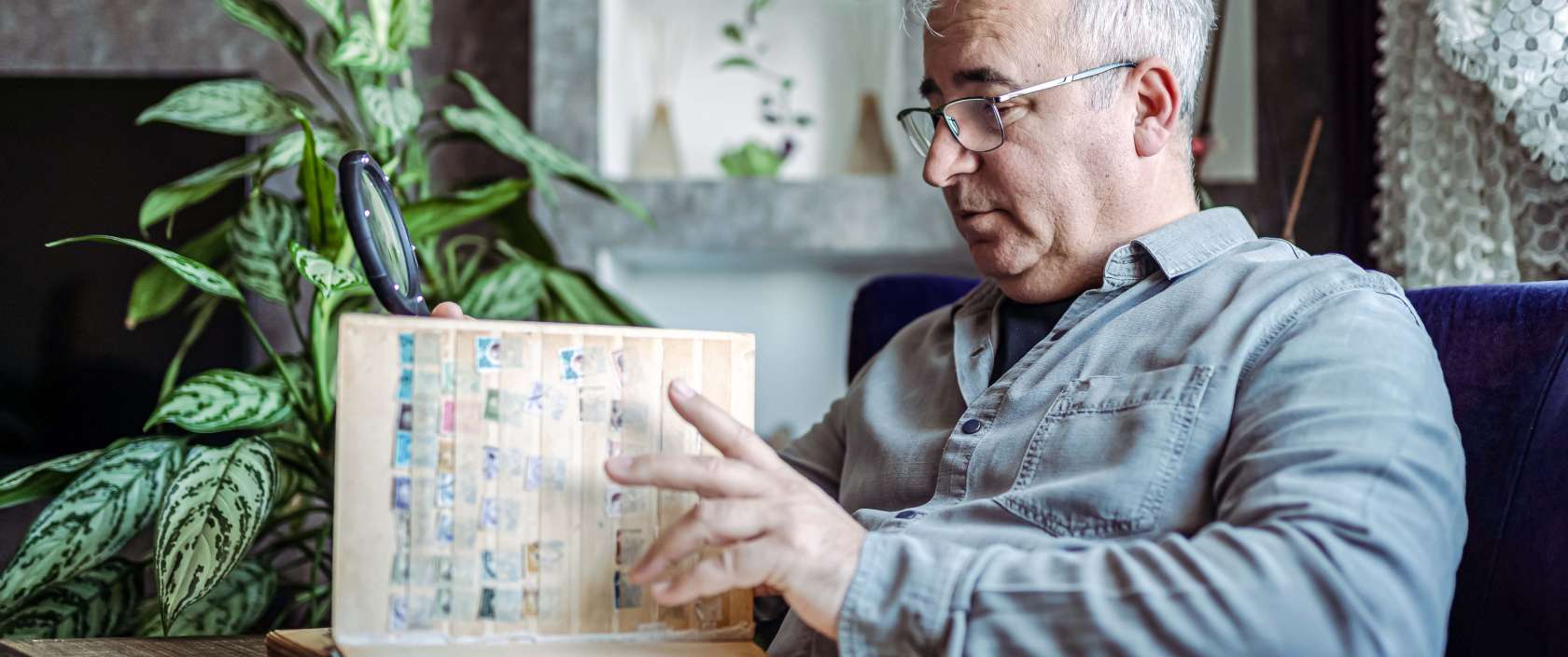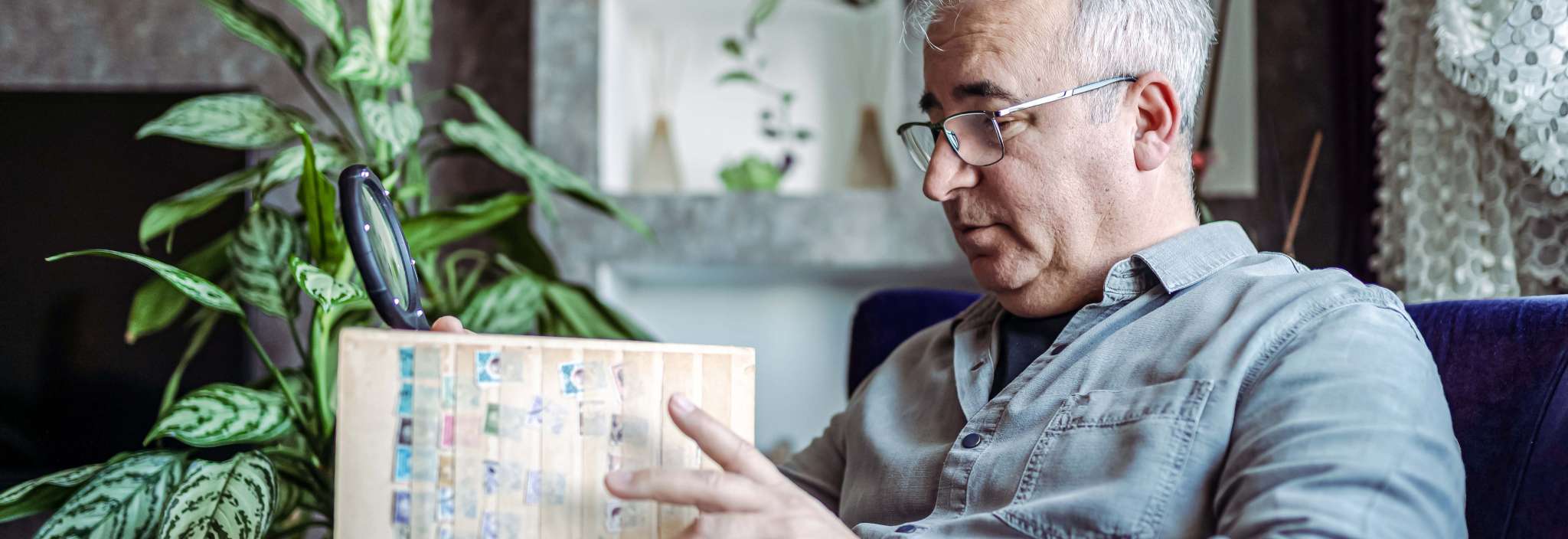Search and Rescue
June 13, 2005
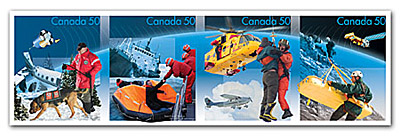
A winter dawn in the North Atlantic, 60 miles off Halifax. Vast grey rollers, their crests whipped by a howling gale, loom over the orange speck of a life raft. Crammed into it is the crew of a storm-battered ship that sank just after midnight. Cold and exposure are taking their toll, and the men in the raft are growing weak.
But as the sky grows brighter, they hear the sound of engines. Moments later, a big yellow helicopter thunders over the foam-streaked waves and hovers over them like a rescuing angel. Its pilot waves and the men send up a feeble cheer. In a few hours, they'll be safe in Halifax.
Around the world, scenes like this are played out every day -- not just at sea, but wherever people are lost, injured or in need of emergency aid. What helps make these rescues possible is COSPAS-SARSAT, an international system of satellites and ground stations that detects distress beacons and swiftly transmits their locations to local search-and-rescue (SAR) services, such as Canada's National Search and Rescue Program. Canada was one of the founding nations of COSPAS-SARSAT.
On June 13, 2005, Canada Post will issue a set of four domestic rate (50¢) stamps to commemorate Canada's role in SAR operations. The design of the pane is a little out of the ordinary, notes Danielle Trottier, Manager, Design and Production, at Canada Post. "This is a miniature pane, a double row of four stamps each, the rows arranged tête-bêche. This makes the pane reversible, so you can display it according to the language you prefer, and have the SAR logo appear correctly in both cases."
The designer of the issue is Montreal's François Dallaire, whose stamp credits include Volunteer Firefighters (2003), Imperial Penny Postage (1998) and Industrial Design (1997). Dallaire is enthusiastic about the tête-bêche format, because it not only permits each stamp's design to stand on its own, but also emphasizes the major overall element of the pane's design: two curves mirroring each other, each suggesting Earth as seen from space, with a satellite photograph appearing within each curve.
"The mirrored elements represent the north and south hemispheres," Dallaire points out, "so that when you reverse the sheet, the overall design is preserved. I like that symbolism, because Australia, for example, also does search and rescue. It helps make it clear that helping people in this way requires a worldwide organization. And by placing the images of the satellites 'above' the curves, the design makes it clear that it's satellite communication that's the key to making the system work."
Dallaire's designs for the stamps also suggest the multiple aspects of SAR. He created them around four themes: an alpine rescue, a rescue from the sea, a rescue by air and a ground rescue in which a dog is as important as the humans. "That's very important," he says. "We have to remember that animals also help save people -- it's not just us doing this."
With their evocative design and powerful images, the new SAR stamps are a fine commemoration of a service that has saved so many people from natural disasters and accidents, underground, on land, at sea and in the air.
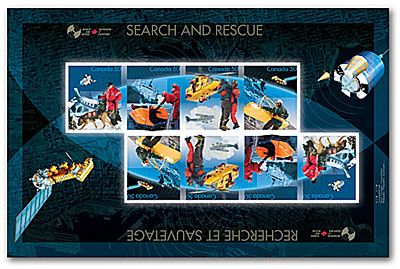
Pane of 8 stamps
$4.00
- Product #: 403616150
- Denomination: 4 x 50¢
- Design: François Dallaire
- Dimensions: 48 mm x 40 mm (vertical)
- Printer: Lowe-Martin
- Printing Process: Lithography in 10 colours
- Quantity: 7,000,000
- Gum Type: P.V.A.
- Illustration: MEDIATEC Diffusion, France
- Perforations: 13+
- Tagging: General, 4 sides
- Photography: Space Imaging; Guy Lavigueur; Reuters/Corbis; Canadian Coast Guard Maritime Search and Rescue, Newfoundland and Labrador Region
- Paper Type: Tullis Russell Coatings
- OFDC Cancellation Location: Victoria, British Columbia
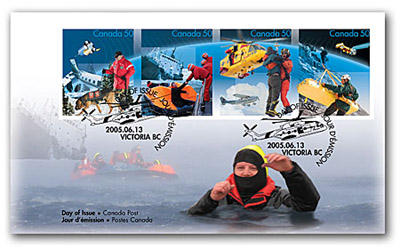
Official First Day Cover
$3.00
- Product #: 403616126
- OFDC Cancellation Location: Victoria, British Columbia
